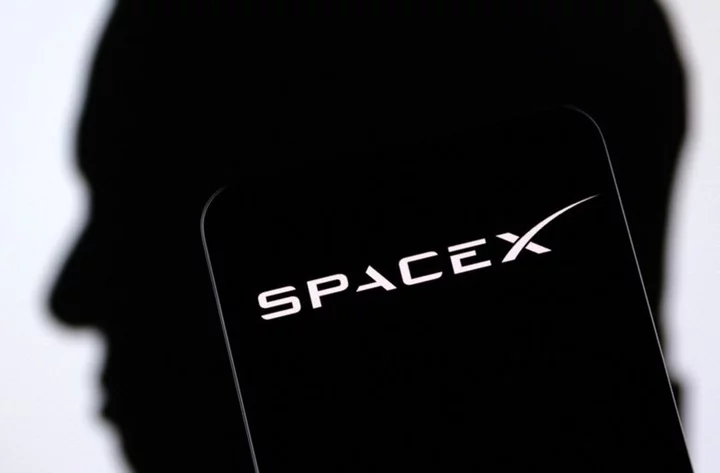
FAA approves license for SpaceX's second launch of Starship Super Heavy
By Joey Roulette (Reuters) -The U.S. Federal Aviation Administration on Wednesday granted Elon Musk's SpaceX a license to launch the
2023-11-16 07:28

The World Is Choking on Plastic Pollution. Can Countries Find a Fix?
In March 2022, the world decided it was time to address the growing scourge of plastic pollution. About
2023-11-13 20:23
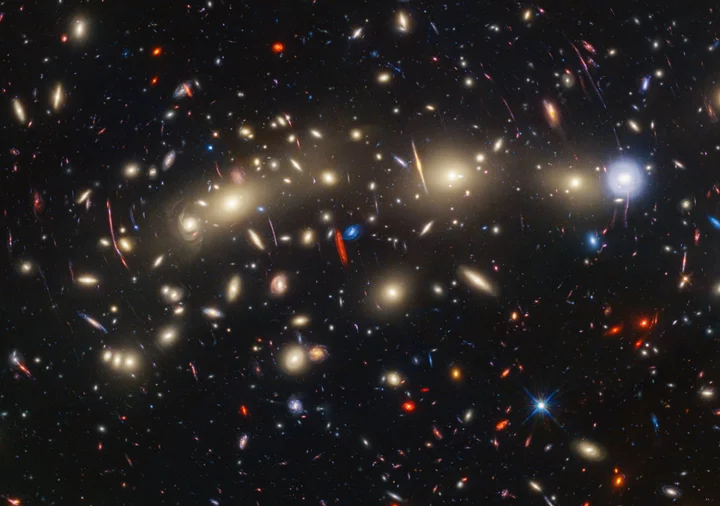
Nasa reveals the most colourful picture of the universe ever made
Nasa has released the most colourful picture of the universe ever made. The space agency created the image by combining data from the James Webb and Hubble space telescopes to capture light that has never been seen before in one image. The picture shows the galaxy cluster known as MACS0416, which is about 4.3 billion light years from Earth. The reds, blues and bright yellows of the picture represent one of the most comprehensive views of the universe ever taken, Nasa said. The colours represent the wavelengths of light captured, going from the shortest in blue to the longest in red. Those colours also help show the distances of those galaxies. Those galaxies that are closer and more active tend to be blue, while the red ones are further away – though some are also red because the vast amount of cosmic dust in the galaxy absorbs the blue of the light from stars. It was created by gathering both visible and infrared light captured by both telescopes. The original imagery was taken by Hubble in 2014, which captured some of the faintest and youngest galaxies ever detected, and it was then combined with Webb’s infrared data to look even further into the early universe. As well as making for a stunning image, researchers are already studying the data used to create it to examine the galaxy cluster and what it might mean for the universe as a whole. The Webb observations can be used to find “transients”, which are objects that change brightness over time. In the image there are some 14 transients – most of which are likely to be individual stars that are becoming brighter, with a minority that are thought to be supernovae. “We’re calling MACS0416 the Christmas Tree Galaxy Cluster, both because it’s so colorful and because of these flickering lights we find within it. We can see transients everywhere,” said Haojing Yan of the University of Missouri in Columbia, lead author of one paper describing the scientific results. One of them in particular is notable, and has been named Mothra. The object is being magnified by up to 4,000 by a process called gravitational lensing – and is notable because it was in both the new Webb images and the original Hubble ones. Scientists still don’t know how that could happen, since the alignment of galaxy clusters and stars needed to magnify something that much is delicate and would be expected to change. Scientists believe that the likely explanation is another unseen object that could be up to a million times bigger than our Sun and is unidentified. “The most likely explanation is a globular star cluster that’s too faint for Webb to see directly,” stated Jose Diego of the Instituto de Física de Cantabria in Spain, lead author of the paper detailing the finding. “But we don’t know the true nature of this additional lens yet.” The findings are detailed in two new papers, one to be published in The Astrophysical Journal and another that already appears in Astronomy & Astrophysics. Read More Nasa gets ‘puzzling’ data back from spacecraft exploring distant object Nasa sending VR headset up to ISS to treat astronaut’s mental health All-UK space mission will ‘push boundaries of human knowledge’ All-female Nasa astronaut team departs International Space Station on spacewalk Watch: Nasa astronauts step out of ISS for spacewalk Jupiter has a creepy ‘face’ in haunting Halloween photo by NASA
2023-11-10 03:25

Bacteria could turn the Moon into a farm for lunar colonies, scientists say
Bacteria could be used to improve the fertility of lunar soil to allow us to live on the Moon, scientists have said. The breakthrough new study combined three different bacteria on lunar soil to see how it would affect the growth of a plant – and found that it dramatically helped improve the fertility of material taken from the Moon. Adding the three bacteria to the soil helped the researchers grow the planet, which was a relative of tobacco named benth. The bacteria work by increasing the amount of a kind of phosphorus in the soil. That is a major nutrient for plants and adding more of it means that plants will grow more easily and populous. Previous studies have shown that it is possible to grow cress using lunar soil. But it has been found to be difficult to support plants, and studies have shown that it is actually worse than volcanic ash from our own planet. What’s more, lunar soil has less nitrogen, which is required to grow plants. What phosphorus there is also comes in a form that cannot be used by plants. If we are to live on the Moon, therefore, scientist will have to find new ways to grow plants. And the researchers suggest that the breakthrough trio of bacteria could be a key step towards that aim. That in turn will help support life in future lunar bases, the researchers note in a new study published today. The work is described in a new paper, ‘Phosphorus-solubilizing bacteria improve the growth of Nicotiana benthamiana on lunar regolith simulant by dissociating insoluble inorganic phosphorus’ published in Communications Biology. Read More One of Saturn’s moons found to have all ingredients essential for life Nasa gets ‘puzzling’ data back from spacecraft exploring distant object Telescope reveals stunning images of the universe as it has never been seen before
2023-11-10 00:20
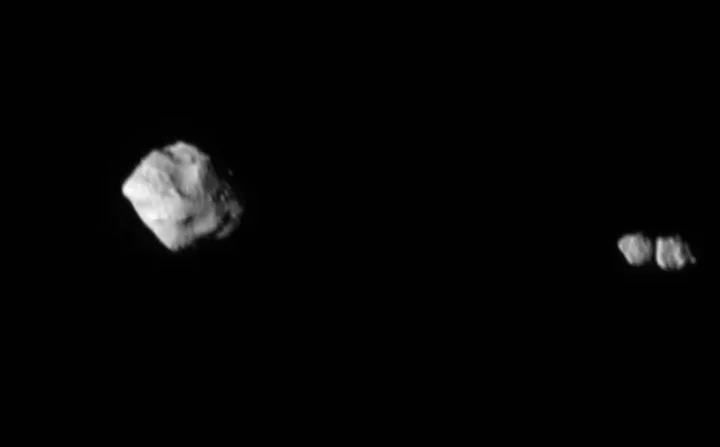
Nasa gets ‘puzzling’ data back from Lucy spacecraft exploring distant object
Nasa has received “puzzling” data from a spacecraft that was studying a distant asteroid. The space agency’s Lucy Spacecraft left Earth in 2021, with the aim of studying “Jupiter trojans”, a set of asteroids that fly around the Sun along Jupiter’s orbit and remain largely mysterious. Recently, scientists decided to send it to visit another small object on its way, largely as a test of the systems on the spacecraft that let it track asteroids for its mission. When Lucy arrived at that object – a main belt asteroid named Dinkinesh – it found a surprise, however. Images taken of the asteroid showed that it had a satellite, which flies around the asteroid like a tiny moon of its own. Now, further examination of those images show that the satellite is not one but two objects. Those objects make up a “contact binary”, or two smaller objects that are touching each other as they fly through space. The unexpected discovery explains some of the strange data that scientists had received as they approached Lucy. But it opens up more confusion about the whole system, which one called “bizarre”. “Contact binaries seem to be fairly common in the solar system,” said John Spencer, Lucy deputy project scientist, in a statement. “We haven’t seen many up-close, and we’ve never seen one orbiting another asteroid. “We’d been puzzling over odd variations in Dinkinesh’s brightness that we saw on approach, which gave us a hint that Dinkinesh might have a moon of some sort, but we never suspected anything so bizarre!” The flyby of Dinkinesh was only intended as a test of the spacecraft’s systems but has now posed new possible research for scientists. “It’s truly marvelous when nature surprises us with a new puzzle,” said Tom Statler, Lucy program scientist from NASA Headquarters in Washington. “Great science pushes us to ask questions that we never knew we needed to ask.” “It is puzzling, to say the least,” said Hal Levison, principal investigator for Lucy, also from Southwest Research Institute. “I would have never expected a system that looks like this. In particular, I don’t understand why the two components of the satellite have similar sizes. This is going to be fun for the scientific community to figure out.” The scientists were only able to confirm the nature of the system with the multiple images that were sent back by Lucy in the wake of its encounter with Dinkinesh. Nasa is working now to get the rest of the data from the spacecraft, which might include yet more surprises. Lucy itself will continue flying through space on a journey that is due to take 12 years. Lucy is actually heading back to Earth, which it will use for a gravity assist to propel it onto the next part of its journey, back through the main asteroid belt and onto the Trojan asteroids. Read More Nasa sending VR headset up to ISS to treat astronaut’s mental health All-UK space mission will ‘push boundaries of human knowledge’ All-female Nasa astronaut team departs International Space Station on spacewalk
2023-11-09 02:57
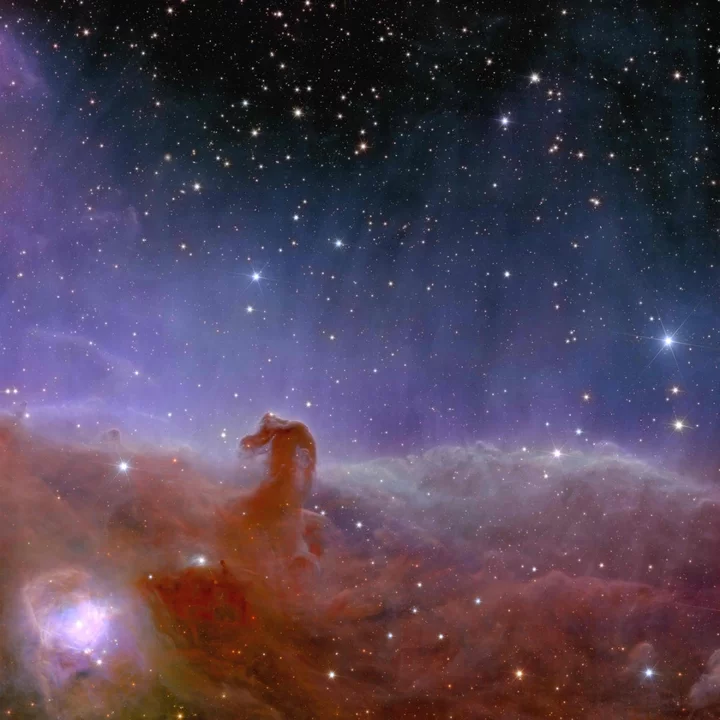
New telescope reveals stunning images of the universe as it has never been seen before
The Euclid space telescope has revealed its first full-colour images, showing the universe as it has never been seen before. The five images, taken by the European Space Agency’s newly launched flying observatory, show the shining lights of distant galaxies. Scientists hope they will also prove useful in better understanding those galaxies, which includes some of the most massive structures in the known universe. Many of the galaxies have never been seen before. And much of the information in them could help explain mysteries such as dark energy and the expansion of the universe. The images released on Tuesday include one of the Perseus cluster of galaxies which shows 1,000 galaxies belonging to the cluster, and more than 100,000 additional galaxies further away in the background. Many of these faint galaxies were previously unseen, and some of them are so far that their light has taken 10 billion years to reach us. Another image captures the spiral galaxy IC 342, nicknamed the Hidden Galaxy, because it is difficult to observe as it lies behind the busy disc of our Milky Way, and so dust, gas and stars obscure our view. One of the new pictures is of globular cluster NGC 6397 - the second-closest globular cluster to Earth, located about 7,800 light-years away. Globular clusters are collections of hundreds of thousands of stars held together by gravity. These faint stars tell us about the history of the Milky Way and where dark matter is located. To create a 3D map of the universe, Euclid will observe the light from galaxies out to 10 billion light-years. The first irregular dwarf galaxy that Euclid observed is called NGC 6822 and is located just 1.6 million light-years from Earth. And the fifth image shows a panoramic and detailed view of the Horsehead Nebula, also known as Barnard 33 and part of the constellation Orion. Scientists hope to find many dim and previously unseen Jupiter-mass planets in their celestial infancy, as well as young brown dwarfs and baby stars, in this new observation. Professor Carole Mundell, ESA director of science, said: “Dark matter pulls galaxies together and causes them to spin more rapidly than visible matter alone can account for; dark energy is driving the accelerated expansion of the universe. “Euclid will for the first time allow cosmologists to study these competing dark mysteries together. “Euclid will make a leap in our understanding of the cosmos as a whole, and these exquisite Euclid images show that the mission is ready to help answer one of the greatest mysteries of modern physics.” Rene Laureijs, the ESA’s Euclid project scientist, said: “We have never seen astronomical images like this before, containing so much detail. “They are even more beautiful and sharp than we could have hoped for, showing us many previously unseen features in well-known areas of the nearby universe. “Now we are ready to observe billions of galaxies, and study their evolution over cosmic time.” Euclid was launched on a SpaceX Falcon 9 rocket from Cape Canaveral in Florida on July 1. Named after the ancient Greek mathematician Euclid, the two-tonne probe made its way towards an area in space known as the second Lagrange point, where the gravitational forces of Earth and the sun are roughly equal - creating a stable location for the spacecraft. The UK has contributed £37 million towards the £850 million mission, with scientists playing key roles in designing and building the probe and leading on one of the two scientific instruments on board. Dr Caroline Harper, head of space science at the UK Space Agency, said: “These first colour images showcase Euclid‘s enormous potential, giving us incredibly sharp images of galaxies and stars, and helping us understand more about the impacts of dark matter and dark energy on the universe. “The UK has played an important role in the mission, leading on the development of the visible imager (VIS) instrument and on key elements of the data processing pipeline, funded by the UK Space Agency. “And this is just the start - UK researchers will be using Euclid data for many years to come to make significant new scientific discoveries about the composition and evolution of the cosmos.” Additional reporting by Press Association Read More Euclid space telescope releases first full-colour images of cosmos First full-colour images of universe captured by Euclid telescope revealed Watch again: ESA reveals first full-colour images of ‘dark universe’ from Euclid Tim Peake: Possibility of all-UK space mission a ‘very exciting development’ Strange purple light phenomenon ‘Steve’ spotted across UK skies Nasa sending VR headset up to ISS to treat astronaut’s mental health
2023-11-08 03:29
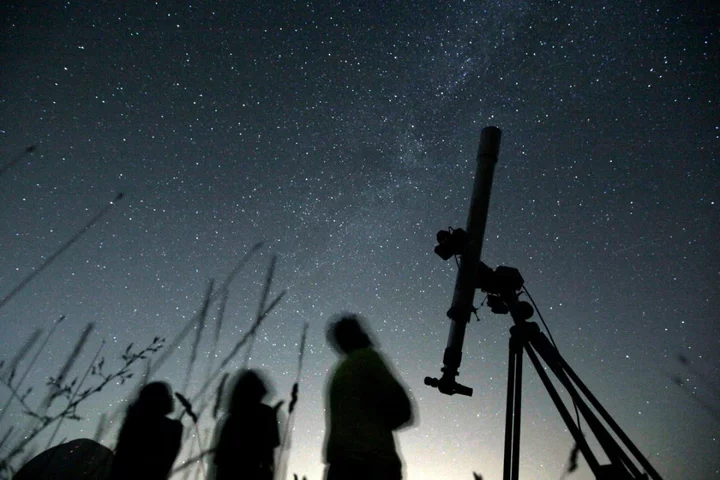
Infrared ‘aurora’ like northern lights spotted on Uranus could help find alien life, scientists say
Scientists have spotted an infrared aurora on Uranus that could help us find alien life. On Earth, aurorae are best known in the form of the northern lights, when bright light streaks across the sky. Uranus also has its own aurora – though it is not visible in the same way, because of the different atmosphere on that planet. Researchers have known about ultraviolet aurorae on Uranus since 1986. But now scientists have confirmed there are infrared aurorae on the distant planet, too. Scientists hope that the findings could help explain the magnetic fields of other planets in our solar system. And it could help us find out whether distant planets support alien life. Aurorae happen when charged particles arrive at a planet and hit its atmosphere, brought down through its magnetic field lines. To better understand those on Uranus, researchers analysed the light from the planet and watched for a specific charged particle that changes brightness depending on how how it is and how dense the atmosphere is, so that it can be used as a thermometer. The researchers found that the density of that particle significantly increased, which suggests they are being ionised by an infrared aurorae, they say. Scientists hope that will inform our understanding of other, similar planets, as well as which worlds might be suitable for alien life. “The temperature of all the gas giant planets, including Uranus, are hundreds of degrees Kelvin/Celsius above what models predict if only warmed by the sun, leaving us with the big question of how these planets are so much hotter than expected? One theory suggests the energetic aurora is the cause of this, which generates and pushes heat from the aurora down towards the magnetic equator,” said Emma Thomas from the University of Leicester, who was lead author on the new study. “A majority of exoplanets discovered so far fall in the sub-Neptune category, and hence are physically similar to Neptune and Uranus in size. This may also mean similar magnetic and atmospheric characteristics too. By analysing Uranus’s aurora which directly connects to both the planet’s magnetic field and atmosphere, we can make predictions about the atmospheres and magnetic fields of these worlds and hence their suitability for life. “This paper is the culmination of 30 years of auroral study at Uranus, which has finally revealed the infrared aurora and begun a new age of aurora investigations at the planet. Our results will go on to broaden our knowledge of ice giant auroras and strengthen our understanding of planetary magnetic fields in our solar system, at exoplanets and even our own planet.” The findings might also help explain a mysterious phenomenon on Earth known as geomagnetic reversal, where the north and south pole switch around. Scientists still know very little about that rare phenomenon, and how it might affect things such as satellites and communications. That process happens every day on Uranus, however. Researchers hope they can use its aurorae to get better data on the nature of that reversal – and what might happen if Earth has one, too. The findings are described in a new paper, ‘Detection of the infrared aurora at Uranus with Keck-NIRSPEC’, published in Nature Astronomy. Read More People don’t know their Uranus from Eridanus when it comes to astronomy Scientists find surprise ‘layer’ underneath surface of Mars Scientists see huge explosion in space – and it could explain life
2023-10-28 00:57
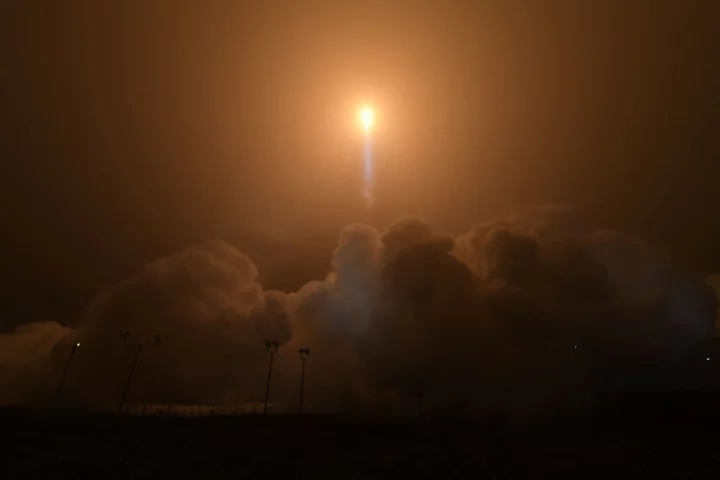
Scientists find surprise layer of molten rock underneath surface of Mars
Scientists have been forced to change their understanding of the inside of Mars after a major new breakthrough. Research looking at seismic waves that were generated when Mars was hit by a meteorite impact suggests that it has a previously unknown layer in its deep interior. Those waves were picked up by Nasa’s InSight lander, which was sent to Mars to better understand its seismic activity. The waves that the lander picked up can be used to get a picture of the anatomy of the planet, by watching how they travel around. The new data indicates the presence of a hitherto unknown layer of molten rock surrounding a liquid metallic core - the planet’s innermost component - that is smaller and denser than previously estimated, researchers said on Wednesday. Waves generated by quakes - including those caused by meteorite impacts - vary in speed and shape when journeying through different material inside a planet. Data from InSight’s seismometer instrument has enabled the planet’s internal structure to come into focus. The meteorite impact that occurred in a Martian highland region called Tempe Terra on Sept. 18, 2021, triggered a magnitude 4.2 quake and left a crater about 425 feet (130 meters) wide. It occurred on the opposite side of Mars from InSight’s location in a plains region called Elysium Planitia. “The importance of the far side impact was to produce seismic waves that traversed the deep interior of the planet, including the core. Previously, we had not observed any seismic waves that had transited the core. We had only seen reflections from the top of the core,” said planetary scientist Amir Khan of ETH Zurich in Switzerland, lead author of one of two scientific papers on the new findings published in the journal Nature. The behavior of the waves indicated that previous assessments of the Martian interior were missing something - the presence of a molten silicate layer about 90 miles (150 km) thick surrounding the core. This molten region sits at the bottom of the interior portion of the planet called the mantle. The researchers also recalculated the size of the core, finding that it has a diameter of about 2,080 miles (3,350 km), with a volume about 30% smaller than previously thought. The researchers said the mantle - a rocky layer sandwiched between the planet’s outermost crust and core - extends about 1,055 miles (1,700 km) below the surface. Unlike Mars, Earth has no molten layer around its core. One of the two studies published on Wednesday indicates this layer is fully molten, with the other indicating that most of it is fully molten, with the top portion partially molten. “The molten and partially molten layer is essentially composed of silicates (rock-forming minerals) that are enriched in iron and in radioactive heat-producing elements compared to the overlying solid mantle,” said Henri Samuel, a planetary scientist with the French national research organization CNRS working at Institut de Physique du Globe de Paris and lead author of the second study. The Martian core is made up mostly of iron and nickel, but also has some lighter elements such as sulfur, oxygen, carbon and hydrogen. The researchers concluded that these lighter elements make up about 9-15% of the core‘s composition by weight, lower than previously estimated. “This amount of light elements is not unlike that of the Earth’s core, which is estimated to be around 10%,” Khan said. Mars, the fourth planet from the sun, has a diameter of about 4,220 miles (6,791 km), compared to Earth’s diameter of about 7,926 miles (12,755 km). Earth is almost seven times larger in total volume. NASA retired InSight in 2022 after four years of operations. “We have learned a lot about Mars by studying the unique seismic record provided by the InSight mission,” Samuel said. “Planets are rich and complex systems because they are a place where many different types of processes coexist and act on various spatial and temporal scales, and Mars is no exception.” Additional reporting by Reuters Read More ‘Crystals brought back by Apollo astronauts indicate true age of the Moon’ Researchers reveal source of largest ever Mars quake Scientists investigate after huge shaking seen across Mars Scientists see huge explosion in space – and it could explain life Massive space explosion observed creating elements needed for life Tim Peake: Possibility of all-UK space mission a ‘very exciting development’
2023-10-27 00:56
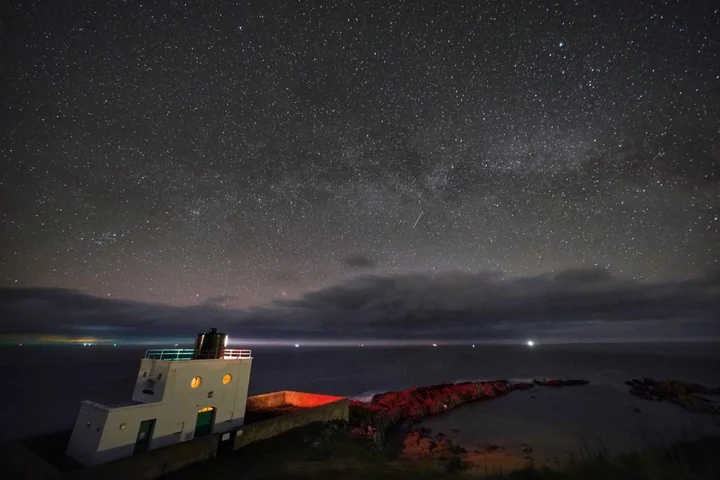
Scientists make the biggest simulation of our cosmos ever, with the mass of 300 billion galaxies
Scientists have created what they say is the biggest simulation of our cosmos ever. The virtual universe has the mass of 300 billion galaxies, packed into a space with edges ten billion light years across. Scientists hope that it will help tell us how the real universe that surrounds us first evolved. They could also help address problems in our understanding of physics that currently suggest we might have made deep mistakes about the cosmos. But the first results from the simulation suggest that it might not work: the findings do not get rid of the tensions between different observations about the universe that have proven so difficult to scientists. Researchers created the simulation, named FLAMINGO, by taking the vast amount of data that has been gathered by telescopes such as Nasa’s JWST and other projects. Those projects give information about galaxies, stars and the other arrangement of matter in our cosmos, which can then be fed into the computer. Researchers then hope that the computer can use that data to simulate the evolution and nature of our universe. That can then help resolve those fundamental difficulties we currently face in physics. One of those issues come from the current theory that the properties of our universe are decided by only a few “cosmological parameters”. We can measure those parameters very precisely. But scientists have run into issues because those parameters do not always match. For instance, there are multiple ways of measuring the Hubble constant, or the speed at which the universe is expanding – but those multiple ways show different results, and scientists have not been able to explain them. Scientists hope that the simulation can help explain or resolve that tension. But it is yet to do so. That is just one of the many ways that the creators of the FLAMINGO simulations hope that they can be used to better understand the universe and the observations that we have of it. It might also allow us to make new kinds of discoveries: the vast amount of data means that it can construct random, virtual universes and see how theories work in there, for instance. The work is described in three papers, all of which are published in the Monthly Notices of the Royal Astronomical Society today. Read More Scientists see huge explosion in space – and it could explain life Massive space explosion observed creating elements needed for life Tim Peake: Possibility of all-UK space mission a ‘very exciting development’
2023-10-26 01:51
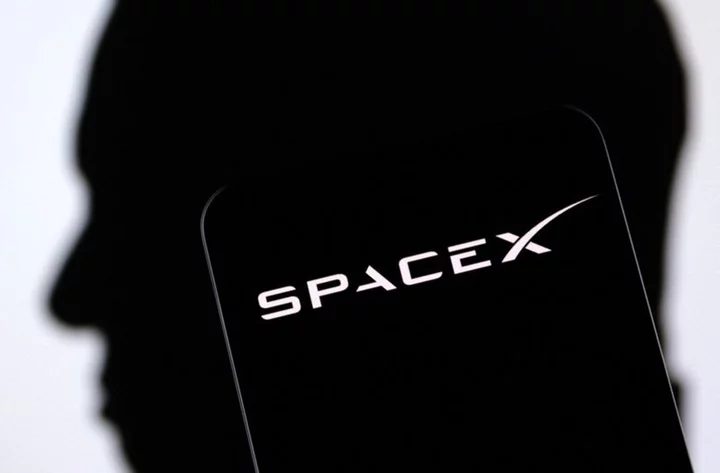
SpaceX signs deal to launch key European satellites - WSJ
SpaceX has signed a deal to launch up to four of Europe's flagship navigation and secure communications satellites
2023-10-23 16:53

Scientists receive powerful ‘fast radio burst’ from the depths of the universe
The Earth has been hit by a powerful blast of energy from the very depths of the universe. The fast radio burst is the most distant of its kind of ever seen, coming from so far away that it has travelled eight billion years to get to Earth. It is also astonishingly powerful, one of the most energetic of its kind ever seen. In less than a second, it released the same energy that comes out of the Sun in more than 30 years. Fast radio bursts are intense, short bursts of energy that come from unknown but extreme activity in space. Scientists are still unsure of how they are formed, but explanations have included everything from extraterrestrial technology to neutron stars. The newly discovered burst appears to come from a small group of merging galaxies, scientists say, which helps support current theories about where they come from. But the intensity of the burst is harder to explain, which challenges our understanding of how they are actually emitted. “While we still don’t know what causes these massive bursts of energy, the paper confirms that fast radio bursts are common events in the cosmos and that we will be able to use them to detect matter between galaxies, and better understand the structure of the Universe,” said Ryan Shannon, from the Swinburne University of Technology. The blasts could be useful ways of answering some of the deepest questions about our cosmos, such as how much it actually weighs. At the moment, attempts to answer that have led to confusing results. “If we count up the amount of normal matter in the Universe — the atoms that we are all made of — we find that more than half of what should be there today is missing,” said Professor Shannon. “We think that the missing matter is hiding in the space between galaxies, but it may just be so hot and diffuse that it’s impossible to see using normal techniques. “Fast radio bursts sense this ionised material. Even in space that is nearly perfectly empty they can ‘see’ all the electrons, and that allows us to measure how much stuff is between the galaxies.” The blast was spotted last year, using a telescope in Japan. Researchers then used other telescopes to verify the find and examine it in more detail. “Using ASKAP’s array of dishes, we were able to determine precisely where the burst came from,” said Stuart Ryder, the first author on the paper. “Then we used the European Southern Observatory (ESO) Very Large Telescope (VLT) in Chile to search for the source galaxy, finding it to be older and further away than any other FRB source found to date, and likely within a small group of merging galaxies.” The findings are reported in a new paper, ‘A luminous fast radio burst that probes the Universe at redshift 1’, published in the journal Science. Read More Scientists unveil radical new ‘missing law’ to explain the universe India’s Modi declares goal to land human on Moon by 2040 Researchers reveal source of largest ever Mars quake
2023-10-20 02:23
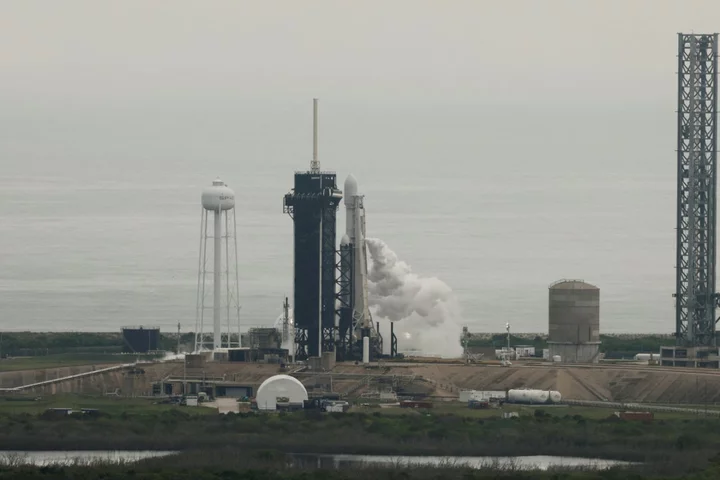
Nasa launches Psyche mission to study an ancient metal asteroid
Nasa has launched its Psyche craft into space, on a mission to study an ancient, metallic asteroid. The spacecraft set off on a six year journey, carried away by one of SpaceX’s Falcon Heavy rockets. It is aimed at an asteroid, also called Psyche, where it will arrive in 2029 and hopes to look back to the beginnings of our own Earth. Most asteroids tend to be rocky or icy, and this is the first exploration of a metal world. Scientists believe it may be the battered remains of an early planet’s core, and could shed light on the inaccessible centers of Earth and other rocky planets. SpaceX launched the spacecraft into a midmorning sky from NASA’s Kennedy Space Center. Psyche should reach the huge, potato-shaped object in 2029. After decades of visiting faraway worlds of rock, ice and gas, NASA is psyched to pursue one coated in metal. Of the nine or so metal-rich asteroids discovered so far, Psyche is the biggest, orbiting the sun in the outer portion of the main asteroid belt between Mars and Jupiter alongside millions of other space rocks. It was discovered in 1852 and named after Greek mythology’s captivating goddess of the soul. “It’s long been humans’ dream to go to the metal core of our Earth. I mean, ask Jules Verne,” said lead scientist Lindy Elkins-Tanton of Arizona State University. “The pressure is too high. The temperature is too high. The technology is impossible,” she added. “But there’s one way in our solar system that we can look at a metal core and that is by going to this asteroid.” Astronomers know from radar and other observations that the asteroid is big — about 144 miles (232 kilometers) across at its widest and 173 miles (280 kilometers) long. They believe it’s brimming with iron, nickel and other metals, and quite possibly silicates, with a dull, predominantly gray surface likely covered with fine metal grains from cosmic impacts. Otherwise, it’s a speck of light in the night sky, full of mystery until the spacecraft reaches it after traveling more than 2 billion miles (3.6 billion kilometers).Scientists envision spiky metal craters, huge metal cliffs and metal-encrusted eroded lava flows greenish-yellow from sulfur — “almost certain to be completely wrong,” according to Elkins-Tanton. It’s also possible that trace amounts of gold, silver, platinum or iridium — iron-loving elements — could be dissolved in the asteroid’s iron and nickel, she said. “There’s a very good chance that it’s going to be outside of our imaginings, and that is my fondest hope,” she said. Believed to be a planetary building block from the solar system’s formation 4.5 billion years ago, the asteroid can help answer such fundamental questions as how did life arise on Earth and what makes our planet habitable, according to Elkins-Tanton.On Earth, the planet’s iron core is responsible for the magnetic field that shields our atmosphere and enables life. Led by Arizona State University on NASA’s behalf, the $1.2 billion mission will use a roundabout route to get to the asteroid. The van-size spacecraft with solar panels big enough to fill a tennis court will swoop past Mars for a gravity boost in 2026. Three years later, it will reach the asteroid and attempt to go into orbit around it, circling as high as 440 miles (700 kilometers) and as close as 47 miles (75 kilometers) until at least 2031. The spacecraft relies on solar electric propulsion, using xenon gas-fed thrusters and their gentle blue-glowing pulses. An experimental communication system is also along for the ride, using lasers instead of radio waves in an attempt to expand the flow of data from deep space to Earth. NASA expects the test to yield more than 10 times the amount of data, enough to transmit videos from the moon or Mars one day. The spacecraft should have soared a year ago, but was held up by delays in flight software testing attributed to poor management and other issues. The revised schedule added extra travel time. So instead of arriving at the asteroid in 2026 as originally planned, the spacecraft won’t get there until 2029. That’s the same year that another NASA spacecraft — the one that just returned asteroid samples to the Utah desert — will arrive at a different space rock as it buzzes Earth. Additional reporting by Reuters Read More Watch live as Nasa launches spacecraft bound to orbit Psyche asteroid Here’s how you can see the ‘Ring of fire’ solar eclipse on Saturday Nasa opens up pieces of a distant asteroid transported back to Earth Prada to design Nasa’s next-gen space suits for Artemis astronauts 1.2 mile-high ‘dust devil’ spotted on Mars by Nasa’s Perseverance rover Rover captures one-mile-high whirlwind on Mars
2023-10-13 22:53
